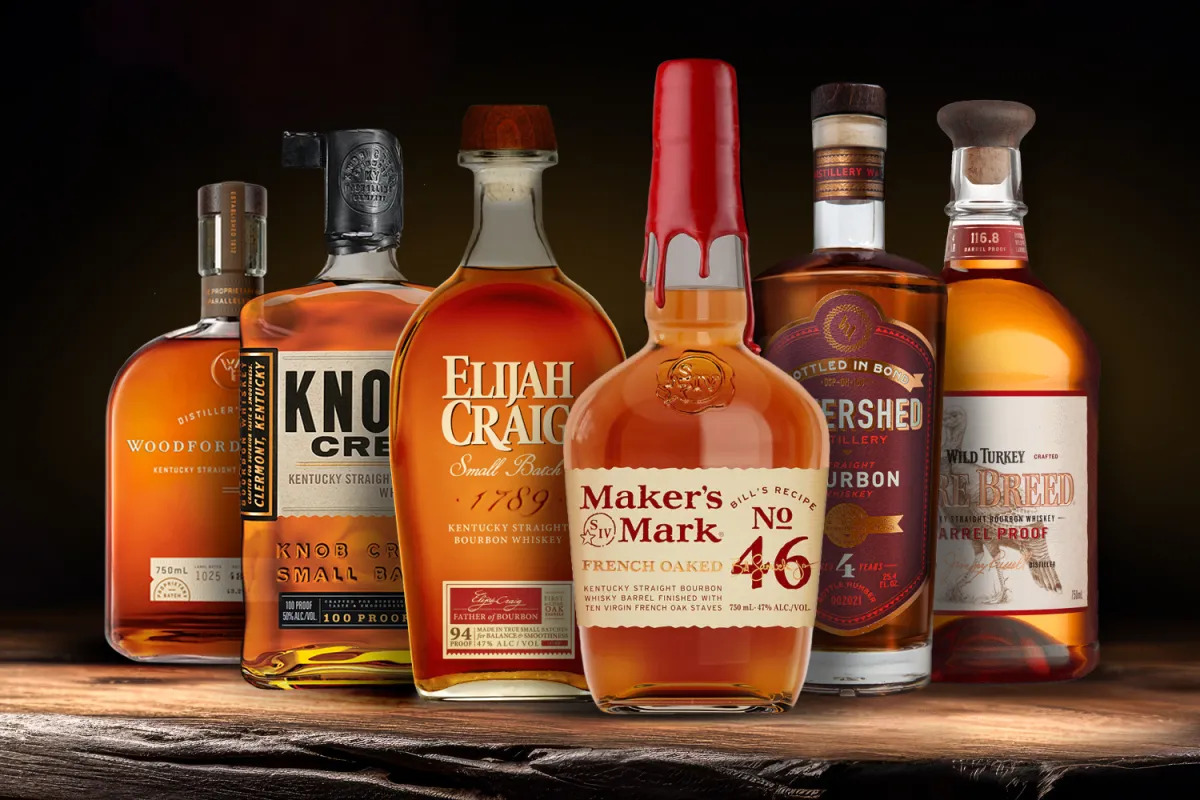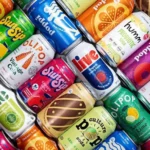
In the heart of American spirits, bourbon stands as a liquid legacy, echoing tales of innovation, heritage, and craftsmanship. From its humble origins in the late 18th century to the bustling distilleries of today, bourbon has woven itself into the fabric of American culture and history. Join us on a spirited journey as we explore 25 captivating historical facts and numerical trivia that unveil the essence of bourbon, from the amber hues of well-aged barrels to the master distillers who have sculpted its flavors. Sip, savor, and immerse yourself in the world of bourbon, where each bottle carries not just the richness of the spirit but also the stories of those who have shaped this iconic American elixir.
Origin: Bourbon’s story begins in the late 18th century, with Elijah Craig, a Baptist minister and distiller, often credited with establishing the first documented bourbon distillery in Kentucky around 1789. While the precise details of bourbon’s origin are often debated, Craig’s contribution is significant in shaping the early narrative of this distinctly American spirit.
Geographic Designation: Bourbon’s geographic designation is a crucial aspect of its identity. To be labeled as bourbon, the whiskey must be produced in the United States, with a majority of its grain content being corn. This requirement ensures that bourbon remains deeply rooted in American soil, emphasizing its connection to the nation’s agricultural heritage.
Corn Content: The emphasis on corn content in bourbon is a defining characteristic that sets it apart from other whiskies. The Federal Standards of Identity for Distilled Spirits mandate that bourbon must contain a minimum of 51% corn in its mash bill. This stipulation contributes to bourbon’s sweetness and provides a foundation for the rich flavors developed during the aging process.
Distillation Process: Bourbon’s distillation process is intricately regulated. The whiskey must be distilled to no more than 160 proof and entered into the barrel for aging at no more than 125 proof. These limitations ensure that the distillation and aging processes contribute to the unique character and quality of the final product.
Barrel Aging: The requirement that bourbon must be aged in new charred oak barrels is a testament to the significance of the aging process. The interaction between the whiskey and the charred wood imparts flavors, colors, and aromas that define bourbon’s profile. The use of new barrels for each batch ensures that the wood imparts its essence fully to the spirit.
Charred Barrels: The charring of bourbon barrels plays a pivotal role in shaping the whiskey’s flavor profile. This process not only imparts smokiness but also caramelizes the natural sugars in the wood. The result is a harmonious blend of vanilla, caramel, and oak flavors that distinguish bourbon from other spirits.
Bottled-in-Bond Act: The Bottled-in-Bond Act of 1897 is a historical milestone that added a layer of quality assurance to bourbon production. This legislation mandated that bourbon labeled as “bottled-in-bond” must meet specific criteria, including being the product of one distillation season, one distiller, and one distillery. The act aimed to combat adulteration and guarantee the authenticity of the whiskey.
Kentucky Bourbon Trail: Established in 1999, the Kentucky Bourbon Trail has become a pilgrimage for bourbon enthusiasts. This collection of distilleries in the heart of bourbon country offers visitors an immersive experience, showcasing the artistry and craftsmanship that define the industry.
Prohibition Impact: The era of Prohibition (1920-1933) dealt a severe blow to the bourbon industry. Many distilleries were forced to shut down, and some turned to producing medicinal whiskey to survive. Prohibition left an indelible mark on the industry’s landscape, influencing its trajectory for decades to come.
Repeal of Prohibition: The repeal of Prohibition in 1933 marked a pivotal moment in bourbon’s history, allowing distillers to resume legal production. This event rekindled the flame of the bourbon industry, leading to its resurgence and eventual global recognition as a quintessential American spirit.
Single Barrel Bourbon: The concept of single barrel bourbon adds a layer of individuality to the spirit. Unlike blended bourbons, which combine whiskey from multiple barrels, single barrel bourbons are bottled from a single aging barrel. This practice highlights the nuanced variations that can exist between barrels, allowing enthusiasts to explore the distinct characteristics of each batch. Single barrel expressions often showcase the craftsmanship of the master distiller and the unique influence of the specific barrel on the final product.
Small Batch Bourbon: Small batch bourbon represents a deliberate approach to crafting whiskey. Distillers produce small batches by combining a limited number of barrels, allowing for greater control over the flavor profile and consistency. This method enables distillers to experiment with different combinations of barrels, resulting in nuanced and well-balanced bourbons that appeal to a diverse range of palates.
Master Distillers: The role of master distillers in the bourbon industry is integral to its success and evolution. Icons like Jim Beam and Booker Noe have left an indelible mark on the industry, shaping the flavor profiles of well-known bourbon brands. These experts bring a wealth of knowledge and experience to the crafting of bourbon, contributing to the industry’s rich heritage and the development of iconic whiskey expressions.
Evan Williams: Evan Williams, a Welsh immigrant, is a key figure in bourbon history. Often referred to as one of the first commercial distillers of bourbon in Kentucky, Williams’s legacy lives on through the Evan Williams brand, which is renowned for its accessibility and quality. The brand pays homage to its namesake, recognizing his pioneering spirit in the early days of American whiskey production.
Bourbon and Taxes: Bourbon’s federal excise tax is a notable aspect of its economic impact. Distillers pay $13.50 per proof gallon, making it one of the most heavily taxed spirits in the United States. The economic implications of this tax contribute to the overall cost of bourbon and play a role in shaping market dynamics within the industry.
Pappy Van Winkle’s Family Reserve: Pappy Van Winkle’s Family Reserve is a legendary and highly sought-after bourbon. Named after Julian “Pappy” Van Winkle, this expression is known for its rarity and exceptional quality. With limited production and a cult-like following, Pappy Van Winkle’s Family Reserve has become a symbol of prestige within the bourbon world.
Blanton’s: Introduced in 1984, Blanton’s holds the distinction of being the first modern single barrel bourbon. Its unique bottle design, featuring a horse and jockey atop the stopper, adds a touch of sophistication. Blanton’s has gained acclaim for its flavorful profile and is often considered a trailblazer in the resurgence of interest in premium bourbons.
Booker’s Bourbon: Booker’s Bourbon, named after Booker Noe, stands out as a high-proof, unfiltered bourbon released in small batches. Booker Noe, a sixth-generation master distiller, played a pivotal role in the bourbon renaissance. The release of Booker’s Bourbon reflects his commitment to crafting robust and authentic expressions that capture the essence of the spirit.
Bourbon Tourism: Bourbon tourism has become a significant trend, drawing enthusiasts to distilleries, festivals, and events dedicated to the spirit. The experience of visiting a distillery, witnessing the production process firsthand, and sampling different expressions adds depth to one’s understanding and appreciation for bourbon.
Bourbon Boom: In recent years, the bourbon industry has experienced a remarkable resurgence, often referred to as the “bourbon boom.” This phenomenon is characterized by a surge in global demand for premium and craft bourbons. The boom has led to the opening of new distilleries, the expansion of existing ones, and a renewed appreciation for the craftsmanship and heritage associated with bourbon.
Buffalo Trace Distillery: The Buffalo Trace Distillery, established in 1792, stands as one of the oldest continuously operating distilleries in the United States. With a rich history dating back to the early days of bourbon production, Buffalo Trace produces a range of well-known bourbons, including Buffalo Trace, Eagle Rare, and the highly sought-after Pappy Van Winkle’s Family Reserve. The distillery’s commitment to heritage and quality has solidified its place as a cornerstone in the bourbon landscape, drawing visitors eager to explore its storied grounds.
Bourbon Heritage Month: In 2007, the U.S. Senate declared September as National Bourbon Heritage Month. This designation recognizes bourbon’s profound impact on American history, culture, and the economy. The month-long celebration encourages bourbon enthusiasts and newcomers alike to explore the diverse world of bourbon, fostering an appreciation for the craftsmanship and tradition that define this quintessentially American spirit.
Angel’s Share: The term “angel’s share” refers to the portion of bourbon that evaporates during the aging process. As bourbon rests in barrels, a certain amount is lost to evaporation, creating a poetic connection to the celestial realm. While the angel’s share represents a loss for distillers, it adds a touch of mystique to the maturation process and underscores the transformation that occurs within the barrel.
Woodford Reserve: Woodford Reserve, produced at the Woodford Reserve Distillery in Kentucky, is celebrated for its meticulous craftsmanship and attention to detail. Known for its complex and balanced flavor profile, Woodford Reserve has earned a reputation as a premium bourbon. The distillery’s commitment to using copper pot stills and a unique triple-distillation process contributes to the distinct character of Woodford Reserve.
Distillery Visits: The experience of visiting a bourbon distillery has become a rite of passage for bourbon enthusiasts. Distillery visits offer a firsthand look at the production process, from mashing and fermentation to distillation and barrel aging. Tasting rooms provide an opportunity to sample various expressions, deepening one’s understanding of the nuances in flavor and showcasing the craftsmanship that goes into producing each bottle of bourbon. Distillery visits contribute to the sense of community among bourbon lovers and foster a deeper connection to the spirit’s rich heritage.








